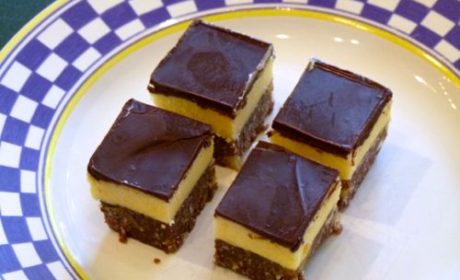Winston-Salem, North Carolina, bills itself as a city of art and innovation. I’d also add history to that description. And you’ll find all three—art, innovation and history—on a walking tour along Reynolda Road.
As I drive along Winston-Salem’s Reynolda Road, the trees and landscaping that border the sidewalks, remind me of the beauties of a southern landscape. It’s a pleasant meander through residential areas punctuated by pockets of businesses, museums, and the gates to Wake Forest University.
Walking tour on Reynolda Road: an itinerary filled with art and history

In the early to mid 1900‘s, tobacco and textile tycoons lived side by side on immense estates along Reynolda Road, then a rural area near Winston-Salem, North Carolina. They had moved to the country for the fresh air and to escape city life.
Today, these estates are part of the Reynolda Historic District, housing art museums, shopping, dining and historic lodging—the perfect place for a self-guided walking tour.
On a trip hosted by Visit Winston-Salem, I spent a day exploring Reynolda Road’s past at the Southeastern Center for Contemporary Art, Reynolda House Museum of American Art and Graylyn Estate. If you have a yen for southern history accompanied by world-class art, put your walking shoes on to follow in my footsteps for a walking tour on Reynolda Road and beyond.
Explore History and Art at Reynolda House Museum of American Art
Reynolda House could be called the house that Katharine Reynolds built because she was the driving force behind its construction. In 1917, Katharine and husband, tobacco tycoon R. J. Reynolds, built their estate on 1,000 rural acres along Reynolda Road.
Thirty years younger than her husband, Katharine oversaw construction of the home and later the operation of the farm, village, post office, dairy barn, smokehouse and central power and heating plant located on the estate. This is now part of Reynolda Village where locals and visitors shop and dine.
Today, the restored Reynolda House showcases a world-class collection of American Art displayed in rooms decorated with original furnishings. It’s like getting two for the price of one—a peek at how the other half lived in the early 1900’s along with a museum collection of American Art.
Visitors may check out audio tours to learn about Reyonlda House—and the art—as they walk through the rooms. On my visit, Elizabeth Chew, Director of Curatorial and Educational Division, gave me the inside scoop, complete with stories about the Reynolds family. That’s how I learned that the strong-willed Katharine was a healthy living advocate, which is why all of the upstairs bedrooms have sleeping porches.

The tour covers all three levels of the home, including the kitchen. The 3rd floor display of family clothing and toys offers an interesting historical perspective; and the downstairs recreation area, added in the 1930’s by Mary Reynolds Babcock, makes for one good time.
Wouldn’t it have been fun to be Mary’s guest for a girl’s night out at the bowling alley, mirrored bar area and indoor swimming pool?

If you’re lucky, you’ll be visiting Reynolda House on one of the two days during the week that the player organ is turned on in the reception hall. The home also includes the 3,000-square-foot Mary and Charlie Babcock Wing Gallery featuring rotating art exhibits. During my visit, The Art of Seating turned out to be a fascinating look at the history of the American chair.
Check the calendar for special events that might coincide with your visit. Traveling on a multi-generational trip to Winston-Salem? Don’t miss the children’s activities at Reynolda House.
Of course there are gardens to stroll. And after thoroughly exploring Reynolda House, I recommend continuing to the village to shop or enjoy a bite to eat at The Silo or Village Tavern.
Listen to the Butler at Graylyn Estate
After lunch, walk across Reynolda Road and up the winding drive of Graylyn International Conference Center for a stroll through the scenic grounds of Graylyn Estate. The former home of Bowman Gray, Sr., President and Chairman of R.J. Reynolds Tobacco Company from 1924 to 1934, is another testament to a strong willed woman.
Bowman’s wife, Nathalie Lyons Gray, designed the home that includes architectural details purchased during the couple’s European travels. From fireplace mantles to entire rooms, if Nathalie liked it, the piece was shipped home with instructions to the architect to “make it fit.” Be sure to step inside to take a look.

If you’re Reynolda Road visit includes accommodations at Graylyn, then you have free access to a butler tour. The Gray’s family stories come to life—and Winston-Salem history along with them—as the butler guides you through the home.
In the library, stop to admire the oak paneling that originally graced the study of Louis XIV of France. And you’ll stand in a small dining room that once was a Turkish mosque. Imagine the persuading and subterfuge required to purchase a mosque in Turkey to bring into the United States.
Another option for touring Graylyn Estate is to purchase a ticket for the Tour Pour du Jour held on the last Sunday of each month. The tour includes a butler tour plus a wine, fruit and cheese reception.
Go Modern at the Southeastern Center for Contemporary Art
If you hurry, there’s still time to make it to the Southeastern Center for Contemporary Art at the James G. Hanes Estate. You’ll need to drive since SECCA, as it’s called, is located at the end of Marguerite Drive in a neighborhood a couple of miles off Reynolda Road.
Before visiting the museum, take time to tour the hunt-style home of James G. Hanes, textile tycoon. You’ll discover an organ in the living room—organs must have been the entertainment hit of the early 1900’s—and several hidden panels throughout the home.
Strolling through the hall that connects the 1920 ‘s era mansion to the ultra-contemporary SCCA is like walking from the past into the future. It’s also an opportunity to peek through a series of large glass windows at the wooded grounds and the garden created by noted designer, Ellen Shipman.

But back to the Southeastern Center for Contemporary Art, you’ll find a series of rooms filled with curated exhibits that change throughout the year. Music lovers should plan a visit to coincide with one of the performances hosted in the The McChesney Scott Dunn Auditorium, a Winston-Salem venue that’s known for outstanding acoustics.
If you’re traveling on a multi-generational trip, check SECCA’s schedule of interactive children’s activities. I had a blast creating art on a big screen with the museum’s newest interactive computer generated drawing tool.
A walking tour in the Reynolda Road Historic District, will convince you that exploring Winston-Salem’s art and history is much more active than you ever thought it could be. Or spread out the fun over a couple of days for a slower travel experience.
More to do when you visit Winston-Salem and the vicinity:
- Take a step back in time at Old Salem Museum & Gardens
- Learn to make Moravian cookies with Mrs. Haines
- Take a wine blending course on a road trip to Raffaldini Winery
- Get out of town for a nature hike on Pilot Mountain
Disclosure: Visit Winston-Salem provided this travel experience but, as always, the opinions are strictly my own.



